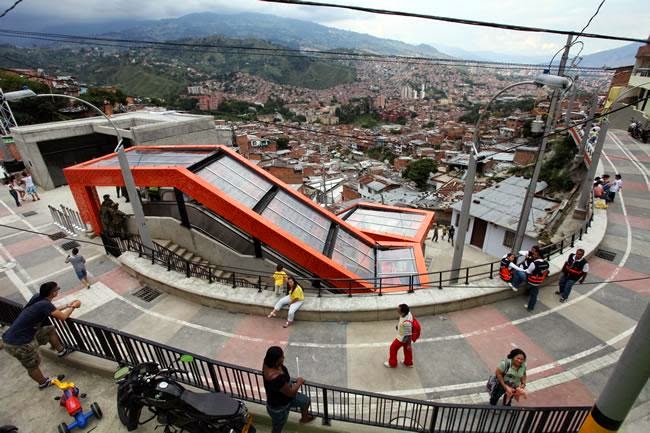Urban Supersta(i)r
As the host of the 7th World Urban Forum, the Colombian city of Medellin has come under the urban spotlight in recent months, and has been widely praised for its dramatic urban transformation.
The iconic imagery of the bright orange escalators rising up through the informal settlement of Comuna 13 has come to represent South America’s new form of urbanism. And the world is excited. But just how much impact do these kinds of projects have on the lives of the citizens? |
| http://healthymedellin.weebly.com |
The escalators
were installed under the Proyectos Urbanos Integrales (Integral Urban Project),
which included a series of urban interventions that aim to raise the levels of
quality of life for residents in certain neighbourhoods across Medellin. It was
especially designed to intervene in areas of the city’s most deprived and
marginalized, where the state usually has a high social debt. The project
constructs safe public spaces, new public buildings and the improvement of
existing schools, medical centers and other services that contribute to social
development and the mitigation of poverty.
“A walkway in Medellín's Comuna 13 is one of many projects in the impoverished neighborhood that have improved mobility and access to the city for residents. (Christopher Swope/ Citiscope)”.
As Proyectos Urbanos Integrales’ most widely recognised initiative, the novelty factor of the escalators is undeniable. But beyond the hype have the escalators actually contributed to the economic growth of the area? Do they deserve the applause they have received for improving safety throughout Comuna 13?
Journalist Letty Reimerink recently spent three months in Comuna 13 to find out the answers to these questions. Hitting the twitter community this week, you can read more about her findings here.




Comments
Post a Comment